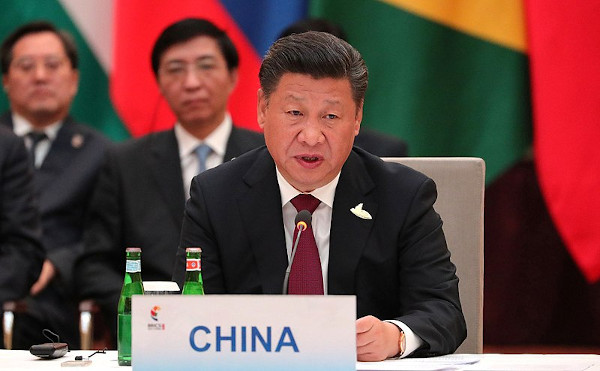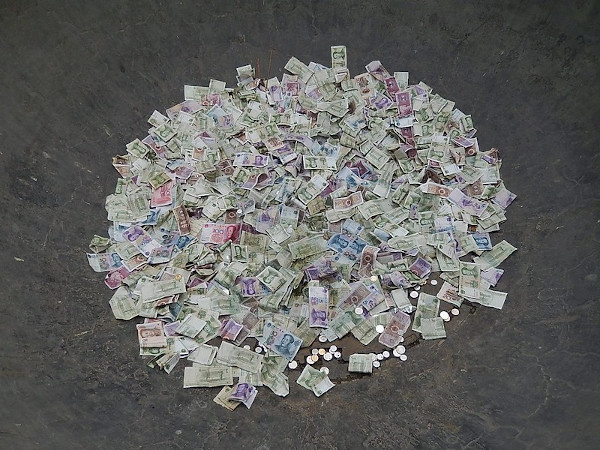China’s Economy Teeters While Xi Tightens His Grip

Over the past decades, the Chinese economy has been growing, at breakneck speed, largely fueled by tremendous export volumes, massive debt, and over-reliance on the real-estate sector. Now, manufacturing is suffering under ongoing coronavirus lockdowns, energy shortages, and supply-chain disruptions. The debt bubble seems about to burst, and the real-estate industry will be the first casualty, with ripples eventually being felt throughout China and the rest of the world.
China’s overall manufacturing output has decreased. The manufacturing purchasing managers index (PMI), a measure of a country’s manufacturing activity, has dropped to 49.2, the lowest number since the beginning of the pandemic, in February 2020. A PMI of less than 5 means that manufacturing has stopped growing. Domestic demand remains weak. Imports are slowing. Debt is high, and overall, economic indicators are approaching levels not seen since the 1990s.
China’s annual GDP growth may slow to the 3%-to-5% range, rather than the 6%-and-over range, which it is accustomed to. Additionally, Xi Jinping’s zero-tolerance Covid policy is so destructive to the general economy that some experts believe if the measures are kept in place, next year’s GDP growth could drop to 4%.

The PRC’s total public debt has climbed to 263% of GDP. Real-estate sector debt is estimated to be at least $5 trillion USD. But this number does not include trillions of dollars' worth of off-balance sheet lending, debt which does not appear on balance sheets.
Most of China’s major banks are state-owned, and regularly engage in murky practices of lending money in such a way that it does not appear on the balance sheets of local governments. Local Government Funding Vehicles (LGVF) are companies that are formed for the sole purpose of borrowing money, used to fund the purchase of land. Local governments derive 40% of their income from the sale of land. Technically, the borrower is a company, an LGFV, but actually, the local government is on the hook for these loans.
As regulators crack down, they are finding that the actual, total indebtedness of local governments is dramatically higher than previously thought. No one knows the real total of LGFV debt, but some estimates have it has high as $7.8 trillion USD, or half of China’s GDP. Meanwhile, the entire real-estate sector is in decline, and local government incomes are dwindling.
The $5 trillion in real-estate market debt is distributed over a number of business sectors, affecting everyone from investors and homebuyers, to companies that sell or transport cement and steel. Widespread defaults could rock the entire economy, causing a drop in Chinese stocks, an increase in unemployment, and deflation. This would result in a sharp decline in the purchase of imported goods and raw materials, which has implications for the entire world. Developing countries, in particular, are dependent on exporting raw materials to China, used in construction and manufacturing. If those two sectors fall into crisis, some of the world’s poorest countries could sink deeper into poverty.

To mitigate further debt crisis, particularly in the real-estate sector, the Chinese Communist Party is cracking down on bank-lending processes and increasing scrutiny of credit. This may or may not be a good long-term strategy to avoid a similar issue in the future. It does, however, mean that credit will become tight in the short to medium turn, which will result in an economic slump. Real-estate accounts for about 24% of the economy, whereas in the U.S. and other developed countries, real estate only accounts for 15%. The real-estate sector not being able to obtain financing will cause a sweeping economic downturn and unemployment. It will also cause a tremendous loss of savings for families.
Xi has urged the public not to speculate on the real-estate market, as this drives up home prices. He has also said that he wants to make housing affordable for citizens, and so is intentionally causing price deflation in the real-estate market. And while this may favor new homebuyers, it means that everyone else purchased their home when it was expensive, and is now paying off debt for an asset that has depreciated in value.
For U.S. households, real-estate makes up about 25% to 40% of net worth. But in China, it is around 74%. Even worse, homes are so expensive in China that this wealth is multigenerational. With a one-child policy, a young Chinese person may be the only child and only grandchild of a total of six adults, all of whom would contribute money to a first-time home purchase.

In Shanghai, China’s largest, most developed, and most fashionable city, the average salary is just over $1,000 USD per month. With a 1,000-square-foot apartment selling for $725,000 USD, it is no wonder that most young people cannot afford to buy a home without the help of their family.
Additionally, due to the increased lending restrictions at banks, it may be difficult for new buyer to obtain credit to purchase homes. Already, new home starts and housing projects have fallen by 33% year-on-year, with a 10% decline predicted for next year.
Despite so many domestic issues, Beijing’s exports and trade surplus continue to grow. As countries begin to open and global demand steadily increases, China’s exports will cushion its economic decay, but exports may not be enough to completely stop it. Exports are expected to grow by 24% this year, but exports only account for 20% of the economy, not enough to offset a weakening domestic economy, and definitely not enough to mitigate the potential havoc that a real-estate and financial-sector collapse could cause.
U.S. Treasury Secretary Janet Yellen said that a crisis in China’s real-estate sector could strain the entire Chinese economy, spilling over to the U.S. This is one of the first times that the U.S. authorities have included an economic threat from China as one of their significant policy-making factors.
The negative impacts of a collapse in China would be wide-sweeping, affecting everything from bank balance sheets, availability of capital, and consumer purchases, to employment, as well as the lifetime savings of citizens, which could evaporate overnight.
The possible impact on the developing world is that countries dependent on exporting raw materials to China will see their economies retract, causing unemployment and hardship. The impact on the U.S. will most likely be limited to those Americans and American entities that are heavily invested in China. Having said that, there are trillions of U.S. dollars, in pension funds and investment funds, invested in Chinese companies traded on U.S. exchanges. While a collapse in China probably will not affect the U.S. economy as a whole, many individuals and companies in the U.S. could suffer.
Author Bio:
Antonio Graceffo is a Ph.D., and also holds a China-MBA from Shanghai Jiaotong University. He works as an economics professor and China economic analyst, writing for various international media. Some of his books include: The Wrestler’s Dissertation, Warrior Odyssey, Beyond the Belt and Road: China’s Global Economic Expansion, and A Short Course on the Chinese Economy.
For Highbrow Magazine
Image Sources:
--See-ming Lee (Flickr, Creative Commons)
--Trey Ratcliff (Flickr, Creative Commons)
--The Kremlin (Wikimedia, Creative Commons)
--Mike Coghlan (Flickr, Creative Commons)






























































































































































































































































































































